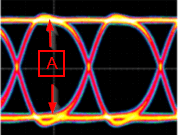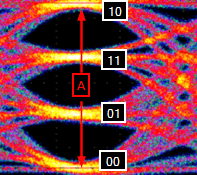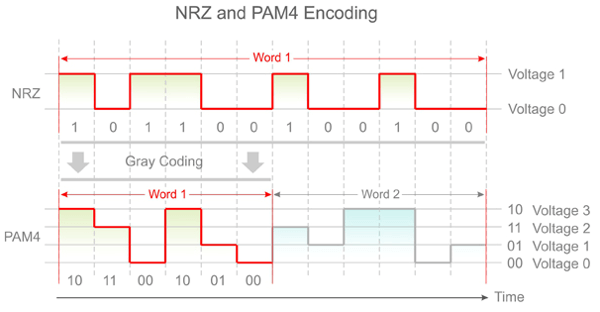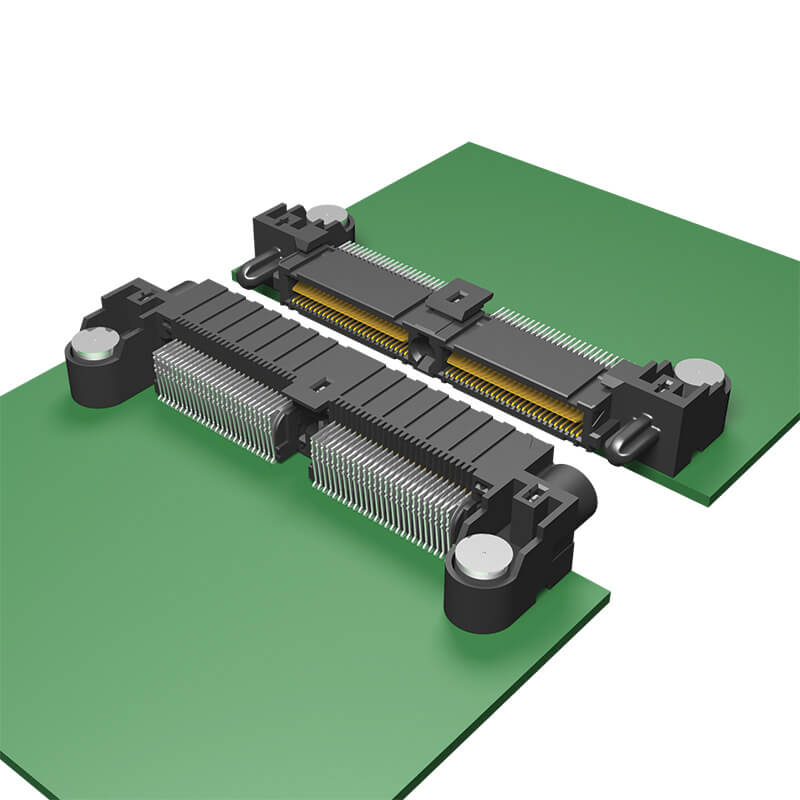As a mechanical engineer (ME), I honestly never figured that I would need to know much more than your typical V=IR (Ohm’s Law), and if I were even more honest, I would say my intention was to completely forget it after my electrical engineering (EE) class of the master’s program. In fact my professor, Dr. Kamel, even stated “Here is this equation you don’t care about, and will soon forget…” Boy was she incorrect in my case.
As fate, or perhaps my employer, should have it; Ohm’s law would be the least of my worries when it came to understanding the flow of electrons over copper.
Often, the EE classes for ME’s would make the comparison of Ohm’s Law to Newton’s 2nd law to help clarify the concepts. Which leaves me wondering if there is a mechanical comparison for understanding NRZ and PAM4 like there is for comparing V=IR to F=MA?
NRZ vs PAM4
So before we start down this road, we should keep in mind that data transmission is the name of the game here. Data consumption is increasing, Moore’s Law is struggling, and everyone wants their data now.
The goal of NRZ and PAM4 is to transmit bytes of data over coax, fiber, or a PCB trace, but each uses a different method and has advantages and disadvantages.

What is NRZ?
Non-Return-to-Zero (NRZ), also called Pulse Amplitude Modulation 2-level, is a binary code using low and high signal levels to represent the 1/0 information of a digital logic signal. NRZ can only transmit 1 bit, i.e. a 0 or 1, of information per signal symbol period.

To better understand this idea we can look at an NRZ Eye and an NRZ Encoding graph, Image 4. For the NRZ Eye, we can look at Image 2 where the top horizontal line would represent a 1 and the bottom line would represent a 0. For the eye height “A” you want to see as large of an opening as you can get. The larger the eye equals a better quality signal.
Some of the advantages and disavantages of NRZ are:
- NRZ has a higher Nyquist frequency
- Good for short distance runs
- Has a throughput of 1 bit per Unit Interval (UI)
- Signal and Noise (SNR) = 0 dB
- Minimizes current change
What is PAM4?
Pulse Amplitude Modulation 4-level (PAM4) is a multilevel signal modulation format used to transmit signal. Each signal level can represent 2 bits of logic information.

For the PAM 4 eye, Image 3, we can see the three eyes formed using four voltage levels (00, 01, 11, 10). The eye height is also important here, and A covers the height of all three eyes. Larger eye openings equal a better quality signal.
Diving a little bit further, we can also look at NRZ and PAM4 graphically. This is shown by Image 4 where in PAM4 each clock cycle can be sent four different voltages of 0, 1, 2, or 3 in which correspond to 00, 01, 11, and 10 respectively. Over “Word 1” for NRZ vs PAM4 you can see with PAM4 the signal of 101100100100 was transmitted in half the time.

Some of the advantages and disadvantages of PAM4 are:
- Used in 400 gigabit Ethernet
- Can pull twice the signal vs NRZ
- Operates on four levels vs two levels in NRZ
- Has a throughput of 2 bit per Unit Interval (UI)
- SNR is worse than NRZ at -9.54 dB
- Reflections are 3x worse
- More expensive equipment required
What can we Compare NRZ and PAM4 to Mechanically?

Looking for a way to accurately portray this mechanically was difficult, but we can compare NRZ and PAM4 using a tolerance stacking problem. For instance, NRZ can be compared to a two board setup. You have one connector on each board that must mate with the other. The overall design of the connectors provide tolerance in any direction to ensure a proper mate. This is similar to the “easy eye” formation seen in NRZ.
For PAM4 the difficultly is stepped up. We are no longer using two boards, we are using a four board setup with three connectors per board. In terms of tolerance stacking, on typical connectors this becomes extremely difficult to set up but clearly gives you more data throughput. This is similar to the three eye formation that you see in PAM4.
How can Samtec Help?
Connector systems such as Samtec NovaRay®, ExaMAX® Backplane, and AcceleRate® HP Arrays are all capable of 112 Gpbs and are well-suited for your application no matter if your system is designed to use NRZ or PAM4.
Samtec also offers full channel signal and power integrity analysis, testing, and validations services. For more information, please contact sig@samtec.com.
So, Dr. Kamel, if you somehow happen to read this blog just know that while you entertained us with your quips against ME’s and understanding the EE world, I somehow ended up needing to know MUCH more about the world of EE than you or I had ever anticipated…
https://www2.samtec.com/electronics-today/enewsletter/nrz-and-pam4-signaling

